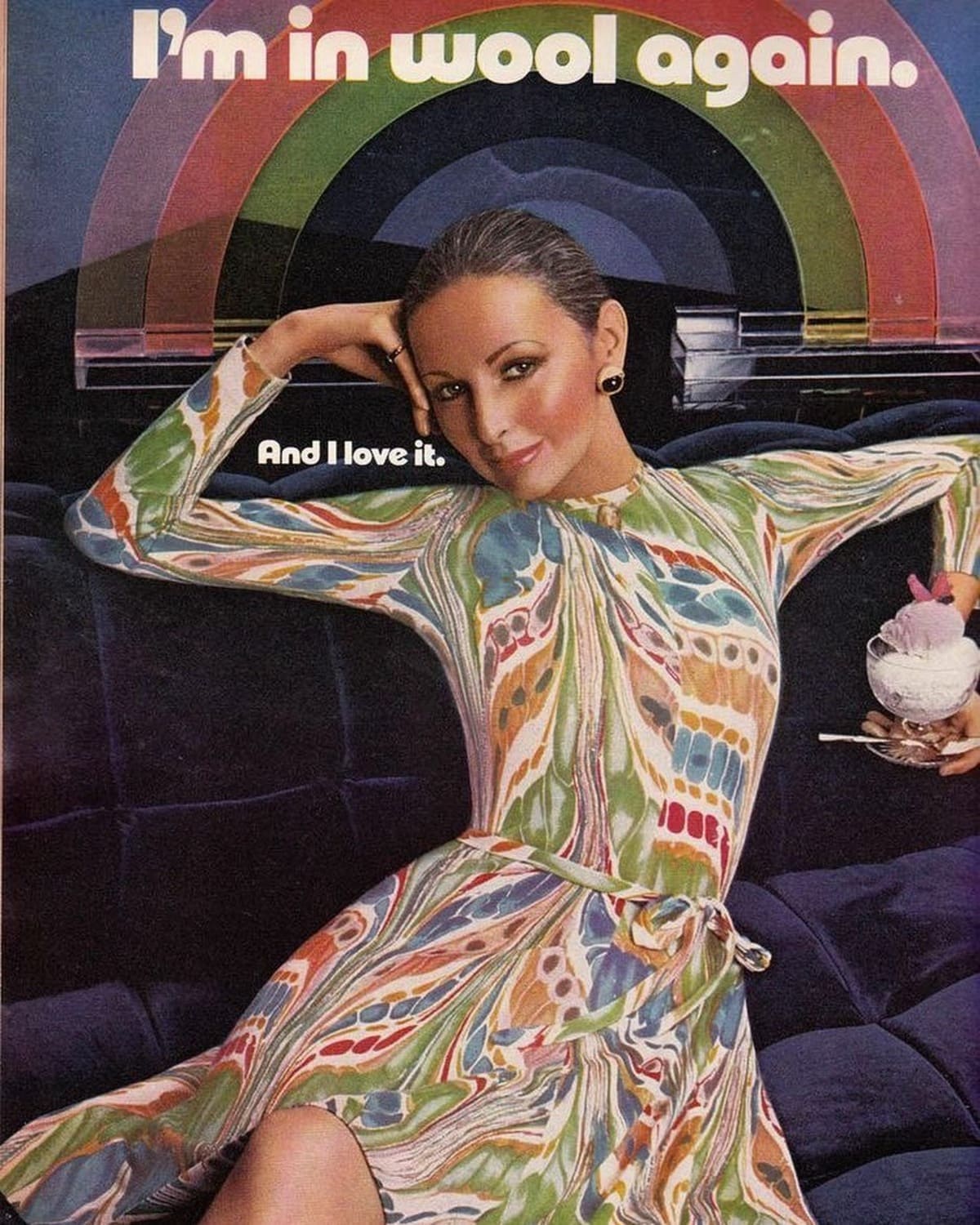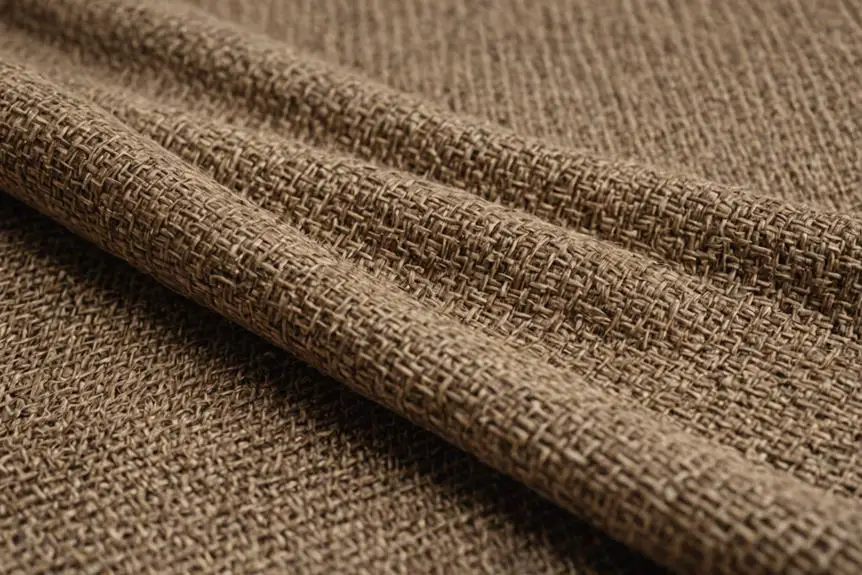Goldworm is a name synonymous with innovation and craftsmanship in the world of knitwear. Founded in New York in 1927 by Samuel and Gertrude Goldworm, the brand carved out a niche in American sportswear and quickly rose to prominence for its luxury knitwear designs. Under the leadership of their son, Robert Goldworm, who joined the company in 1947, the family-run business transformed knitwear into a high-fashion statement, blending American style with Italian craftsmanship. Robert, the first American designer to base knit production in Italy, sought out the finest artisans and materials, setting Goldworm apart in an industry that was just beginning to appreciate the potential of quality knits. This forward-thinking approach earned the brand numerous accolades, including the prestigious Coty Award in 1956.
By the mid-20th century, Goldworm was recognized globally as a leader in the knitwear industry. Robert’s efforts in promoting Italian knitwear on the international stage were rewarded in 1959 when he was honored by the Italian government, cementing the company’s reputation as a bridge between American fashion innovation and European craftsmanship. With a production base in Milan, Goldworm brought Italian elegance to the American market, influencing trends and elevating knitwear to new levels of sophistication. The brand became known for its luxurious use of fabrics like merino wool and wool blends, which set it apart from its competitors and helped establish knitwear as a fashion staple.
Though Goldworm ceased operations in 1981 following Robert’s retirement, its legacy remains influential. Throughout its history, the company pushed boundaries in both design and craftsmanship, leaving a lasting imprint on the knitwear industry. Today, vintage Goldworm pieces are highly sought after by collectors and fashion enthusiasts alike, cherished for their timeless elegance and superior quality. Whether you’re a fan of mid-century fashion or simply appreciate finely crafted garments, a Goldworm piece tells a story of a family’s dedication to perfecting the art of knitwear.
60s Fashion in London’s King Street
How to tell if Goldworm is vintage from the logo
Goldworm has been known for its high-quality knitwear and elegant designs, with its logo evolving through the decades. The changes in the logo, from the ornate script of earlier years to the more modern blocky text, are indicative of different time periods. This makes the logo a useful tool for identifying the era of a particular piece of Goldworm clothing.
1950s to 1960s Goldworm logo
- The logo from this period features a cursive script.
- The word “Goldworm” is written in a flowing, handwritten-style font, giving it a classic and elegant feel.
- This design reflects the mid-20th century focus on sophistication and luxury.
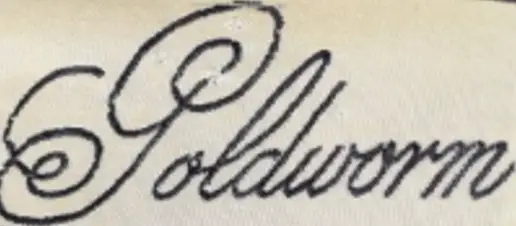
1950s to 1960s Goldworm logo
1960s to 1980s Goldworm logo
- The logo from the late 1960s into the 1980s introduces a more structured and formal font.
- The lettering is blocky and bold, moving away from the cursive look of previous years.
- This change reflects the brand’s shift towards a more modern aesthetic in line with contemporary fashion trends.

1960s to 1980s Goldworm logo
How to tell if Goldworm is vintage from the tags
Goldworm, an iconic knitwear brand, has evolved significantly over the decades. From the 1950s to the 1980s, Goldworm tags reflect different design elements, manufacturing details, and materials. Understanding these changes helps identify whether a piece is truly vintage. Goldworm tags from earlier decades often featured hand-fashioned indicators, bold branding, and country of origin information, marking its luxurious Italian craftsmanship. Below is a breakdown of the tags by decade based on the images provided.
Can’t identify those vintage tags or labels? Upload a picture on our vintage tag identification page, and we’ll help you out!
1950s vintage Goldworm tags
- Elegant cursive “Goldworm” font in black, typically on white or off-white background.
- Hand-fashioned in Italy, emphasizing the craftsmanship.
- Often includes specific material information like “100% virgin merino wool” or wool blends.
- May include “Milan” and “New York” to showcase the brand’s international reach.
- RN numbers featured, such as “RN 22211”.
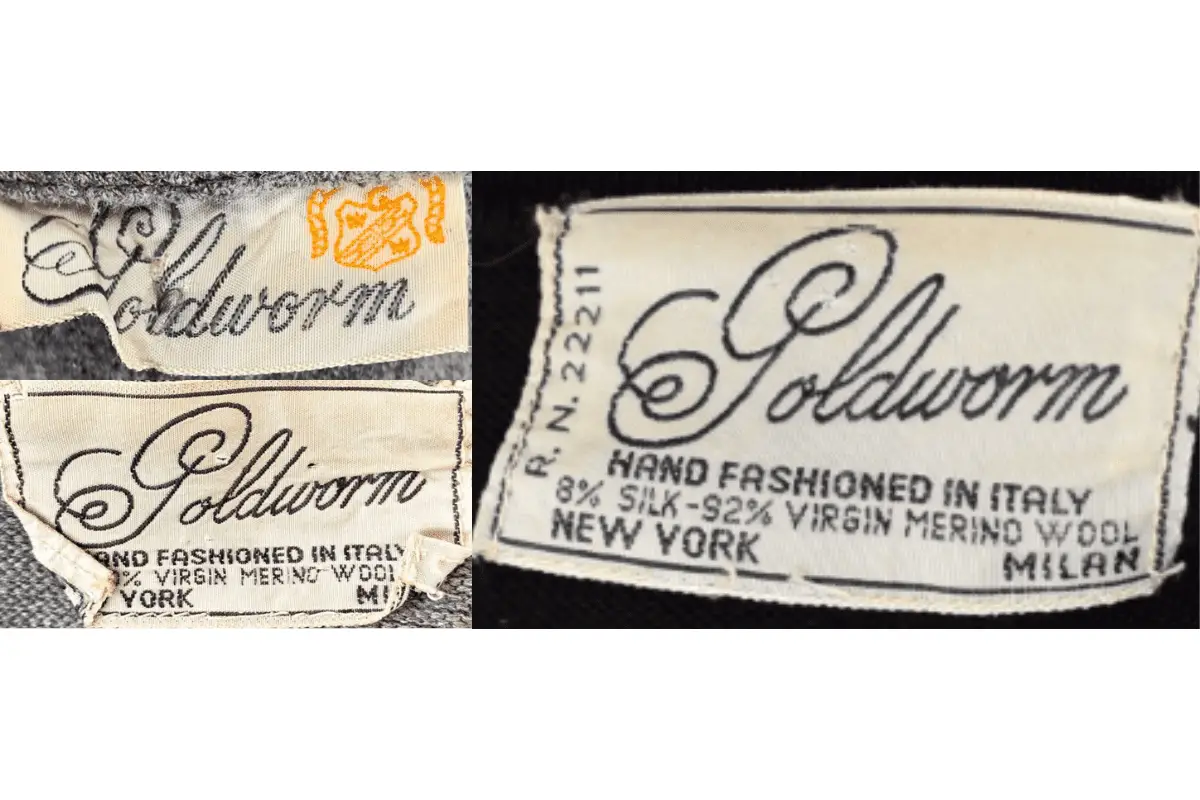
1950s Goldworm tags
1960s vintage Goldworm tags
- Similar elegant cursive font as seen in the 1950s, with some stylistic refinements.
- Tags continue to highlight materials like “100% virgin merino wool” or wool-silk blends.
- Includes both Milan and New York as locations for brand representation.
- Tag background may vary in color slightly but typically remains neutral with black text.
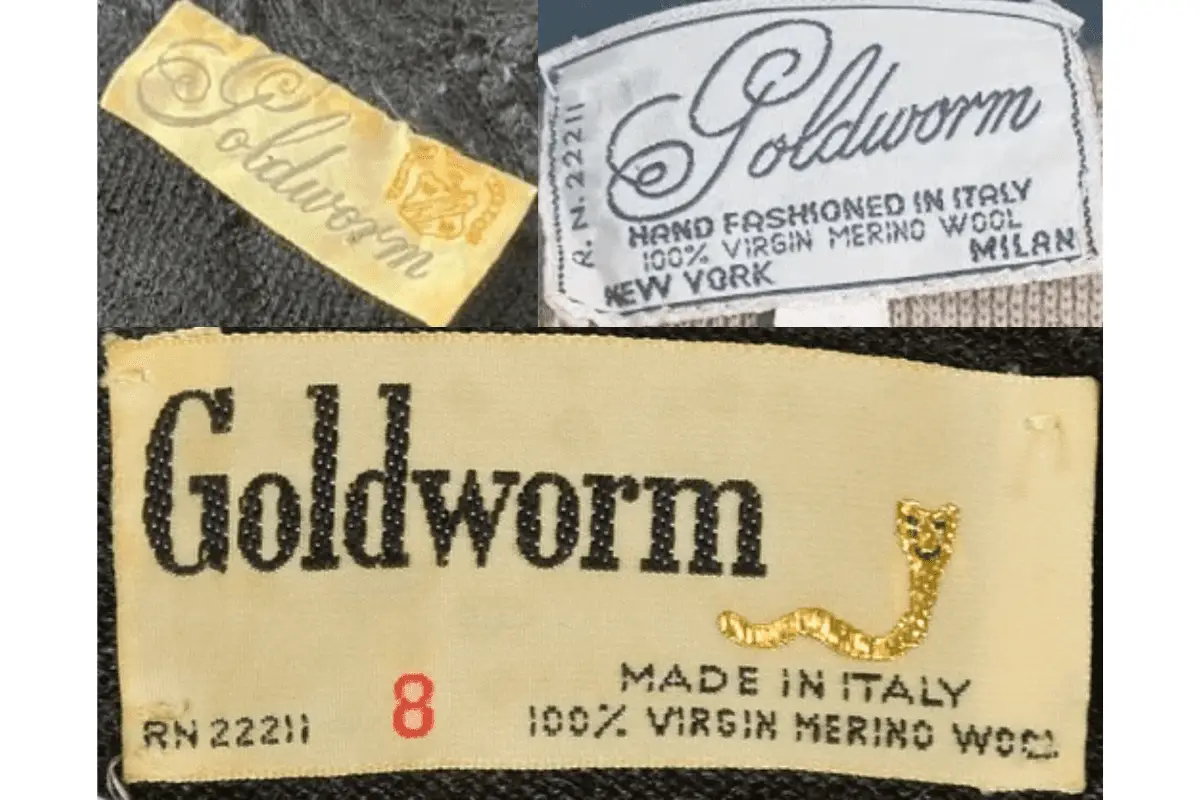
1960s Goldworm tags
1970s vintage Goldworm tags
- Goldworm branding becomes more prominent, with a stronger, bold serif font.
- Distinctive gold worm logo next to the “Goldworm” name, reflecting a playful but luxurious touch.
- Still includes material information, such as “100% virgin merino wool” and country of origin, “Made in Italy”.
- RN 22211 continues to appear on tags, maintaining consistency in the brand’s identification numbers.
- Size indicators often included, sometimes in contrasting red font.
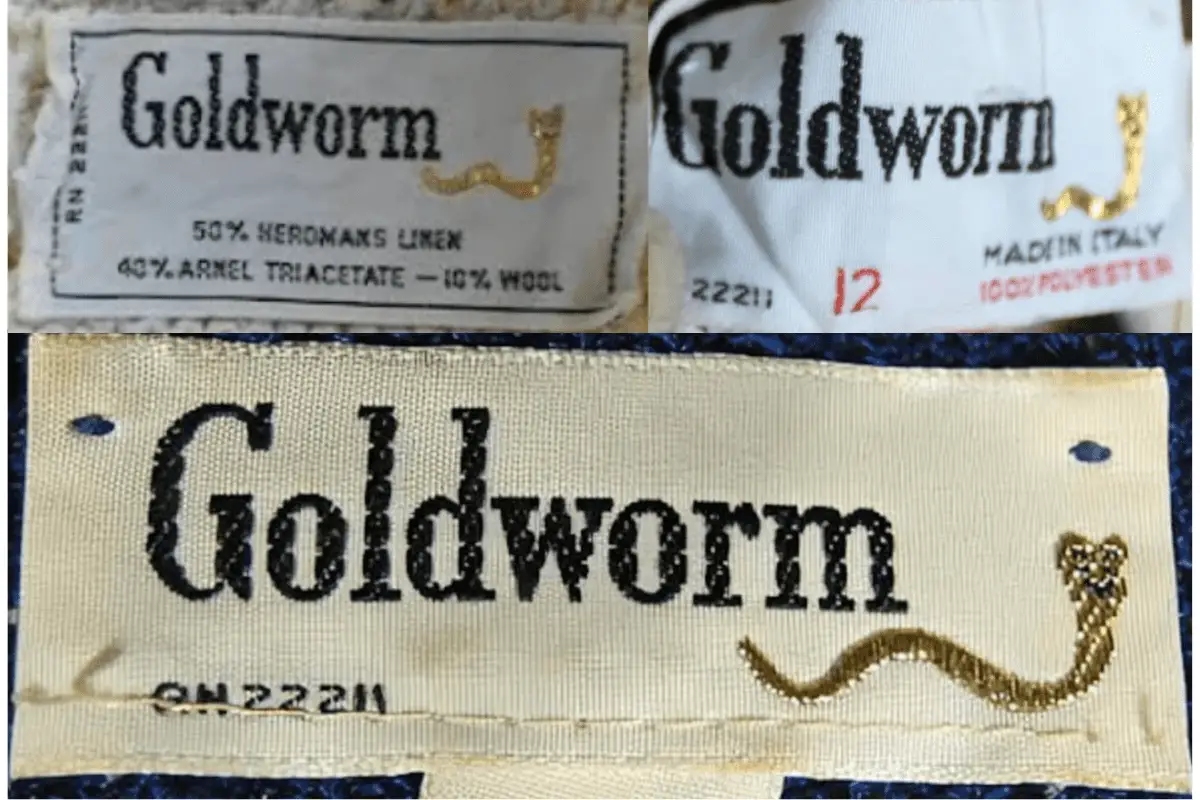
1970s Goldworm tags
1980s vintage Goldworm tags
- The use of the bold Goldworm name and gold worm icon persists into the 1980s.
- Increased emphasis on synthetic fabric blends, with materials like polyester and linen blends appearing alongside traditional wool.
- Tags often feature a combination of materials, such as “50% Heromaks Linen, 40% Arnel Tricetate, 10% Wool.”
- Made in Italy remains a key identifier, and size markers are often indicated with numbers in red or black.
- Tag designs vary slightly, with some showing boxed or stitched borders around the brand name.
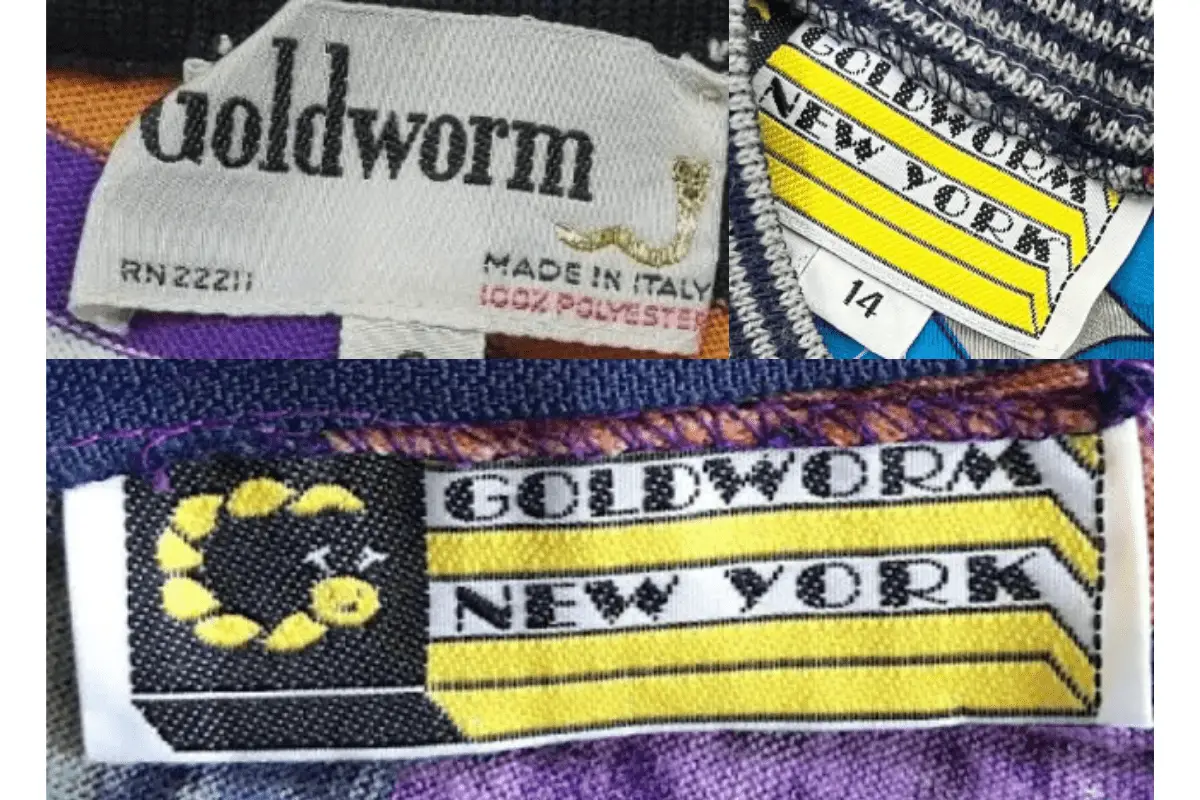
1980s Goldworm tags
